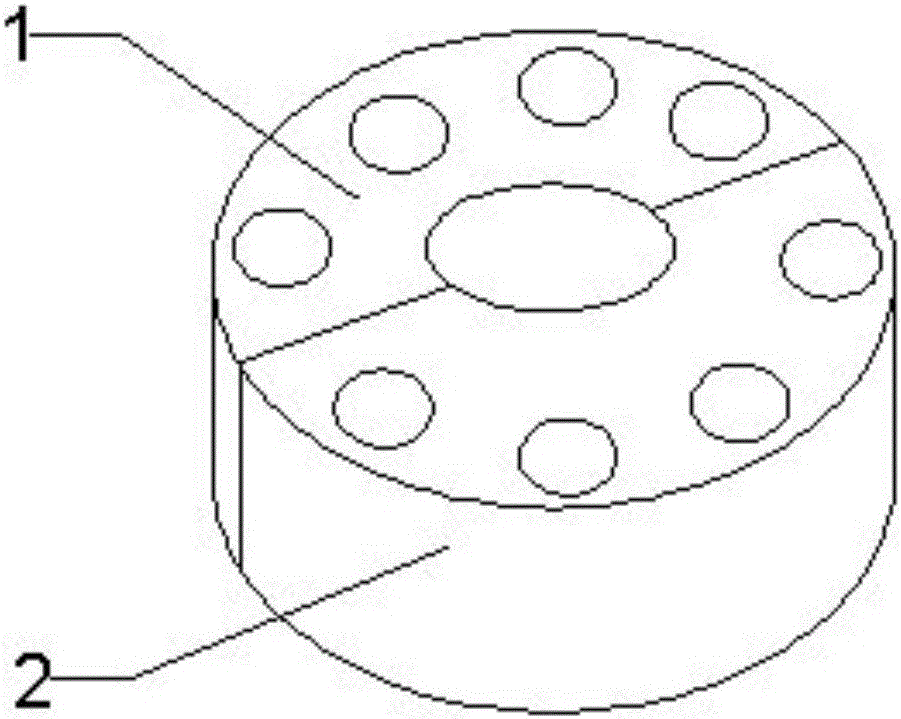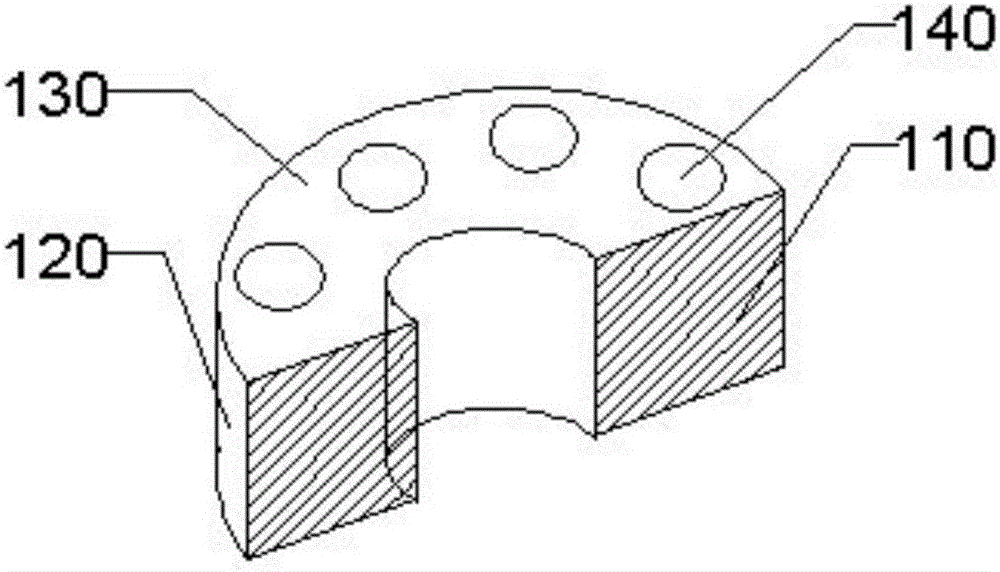Method for preventing agalloch from being attacked by insects
A kind of technology for agarwood and insect pests, which is applied in botany equipment and methods, animal repellants, horticulture, etc. It can solve the problems of reducing the survival rate of agarwood, affecting the yield of agarwood, and withering twigs, so as to achieve convenient operation and installation With removal, long-lasting effect
- Summary
- Abstract
- Description
- Claims
- Application Information
AI Technical Summary
Problems solved by technology
Method used
Image
Examples
Embodiment 1
[0034] Step 1: dig planting holes in the plantation, collect backfill soil, the diameter of the planting holes is 50cm, and the depth is 40cm. In each planting hole, after applying 80g of base fertilizer, apply plant ash and water according to the mass ratio of 1:100. Plant ash solution 60g, apply 50g base fertilizer after 3 days, then apply described plant ash solution 40g, plant after 15 days.
[0035] Wherein, the base fertilizer is obtained after fermenting and decomposing bran residue, cow dung, fish dung and water according to a mass ratio of 5:3:1:500.
[0036] Step 2: On a cloudy day in March, plant agarwood saplings with a tree age of one year and a root length of more than 4cm in one hole and one plant upright. Divide the collected backfill soil into two parts, one part of the backfill soil is mixed evenly with 150g of base fertilizer, and backfill To the planting hole, another part of backfill soil covers the planting hole to form a surface layer with a depth of 10 ...
Embodiment 2
[0051] Step 1: dig planting holes in the plantation and collect backfill soil. The diameter of the planting holes is 65cm and the depth is 60cm. In each planting hole, after applying 80g of base fertilizer, apply plant ash and water according to the mass ratio of 1:100. Plant ash solution 60g, apply 50g base fertilizer after 5 days, then apply described plant ash solution 40g, plant after 20 days.
[0052] Wherein, the base fertilizer is obtained after fermenting and decomposing bran residue, cow dung, fish dung and water according to a mass ratio of 5:3:1:500.
[0053] Step 2: On a cloudy day in March, plant agarwood saplings with a tree age of one year and a root length of more than 4cm in one hole and one plant upright. Divide the collected backfill soil into two parts, and mix one part of the backfill soil with 200g of base fertilizer evenly. Backfill to the planting hole, another part of backfill soil covers the planting hole to form a surface layer with a depth of 20cm, ...
Embodiment 3
[0067] Step 1: dig planting holes in the plantation, collect backfill soil, the diameter of the planting holes is 60cm, and the depth is 50cm. In each planting hole, after applying 80g of base fertilizer, apply plant ash and water according to the mass ratio of 1:100. Plant ash solution 60g, apply 50g base fertilizer after 4 days, then apply described plant ash solution 40g, plant after 18 days.
[0068] Wherein, the base fertilizer is obtained after fermenting and decomposing bran residue, cow dung, fish dung and water according to a mass ratio of 5:3:1:500.
[0069] Step 2: On a cloudy day in March, plant agarwood saplings with a tree age of one year and a root length of more than 4cm in one hole and one plant upright. Divide the collected backfill soil into two parts. One part of the backfill soil is mixed with 180g of base fertilizer evenly. Backfill to the planting hole, another part of backfill soil covers the planting hole to form a surface layer with a depth of 15cm, a...
PUM
| Property | Measurement | Unit |
|---|---|---|
| Diameter | aaaaa | aaaaa |
| Depth | aaaaa | aaaaa |
| Depth | aaaaa | aaaaa |
Abstract
Description
Claims
Application Information
 Login to View More
Login to View More - R&D
- Intellectual Property
- Life Sciences
- Materials
- Tech Scout
- Unparalleled Data Quality
- Higher Quality Content
- 60% Fewer Hallucinations
Browse by: Latest US Patents, China's latest patents, Technical Efficacy Thesaurus, Application Domain, Technology Topic, Popular Technical Reports.
© 2025 PatSnap. All rights reserved.Legal|Privacy policy|Modern Slavery Act Transparency Statement|Sitemap|About US| Contact US: help@patsnap.com



